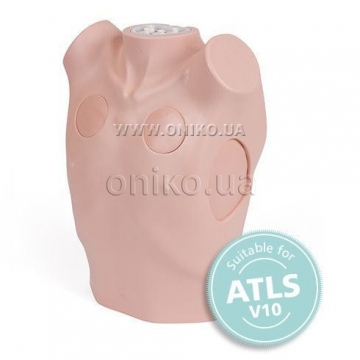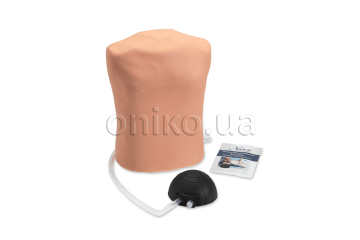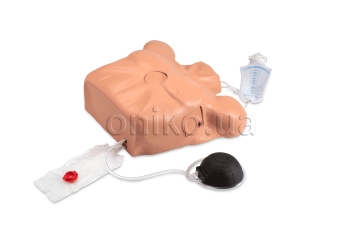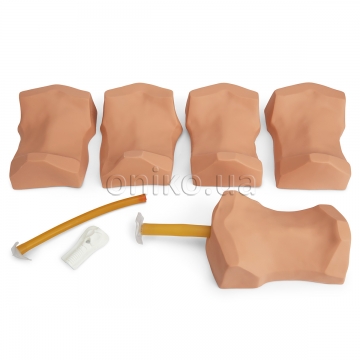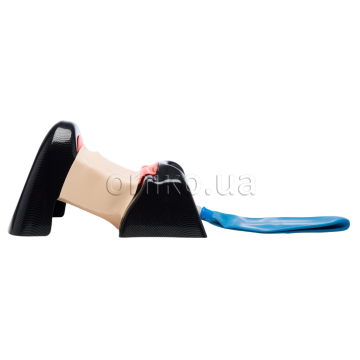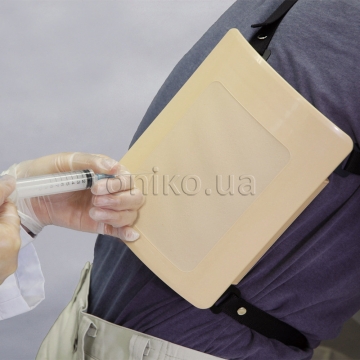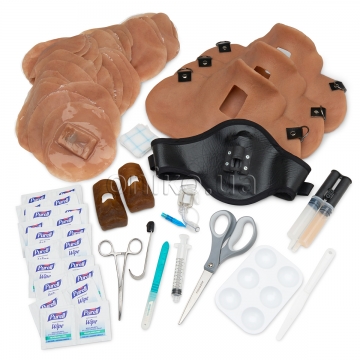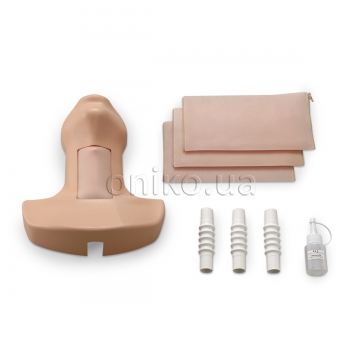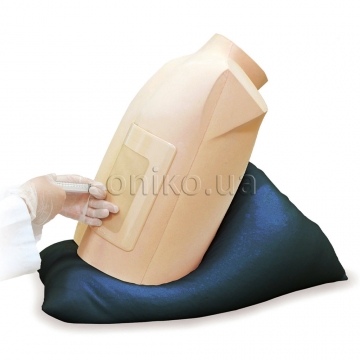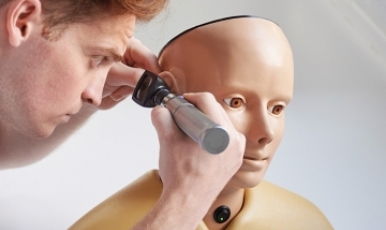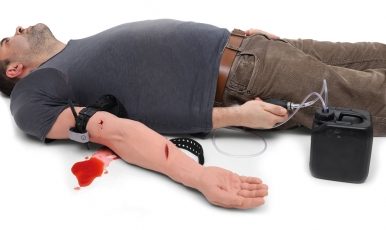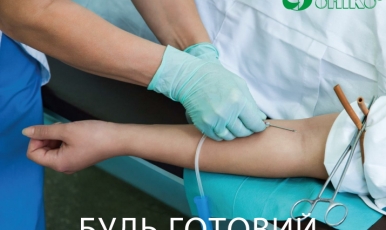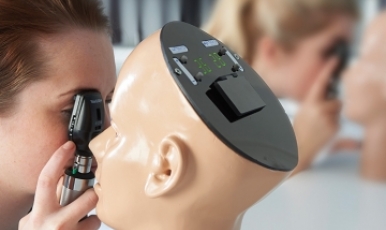Chest Drain & Needle Decompression Trainer
This new simulator has been designed to meet specific requirements of healthcare professionals training in surgical or guidewire assisted thoracostomy, and thoracentesis. This product, complete with interchangeable modules, allows for a variety of chest drain insertion techniques to be performed including ultrasound-guides techniques.
Skills:
- Needle decompression of tension pneumothorax.
- Ultrasound-guided chest drain insertion (Seldinger-type), including insertion of needle under direct vision, and ultrasonic recognition of chest structures.
- Open, or cut-down chest drain insertion: recognition of correct position, surgical incision, blunt dissection through chest wall, perforation of pleura, and finger sweep.
- Suture of tube to chest wall.
Features:
- Representation of adult male thorax with arms raised.
- Suitable for supine, sitting, or leaning forwards positions.
- Bony and soft tissue landmarks: manubriosternal joint, clavicles, ribs, pectoralis major and latissimus dorsi.
- Bilateral chest drain and needle decompression pads.
- Internal ultrasound anatomy: diaphragmatic structures and collapsed lung.
- Reservoirs can be filled with fluid or mock blood to represent pleural effusion.
- Needle decompression air reservoirs provide realistic release of air on insertion of needle.
- Affordable replaceable.
Advanced Chest Drain Pads:
- Ultrasoundable.
- For use with liquids – e.g. effusion, or haemothorax.
- Needle, guide-wire, dilator, and dran-tube can all be realistically inserted.
- Guidewire insertions will self-seal allowing multiple uses.
- For open/surgical incisions will not self-seal.
- Can be sutured.
- Pleural layer, providing realistic give, or “pop”, on puncture with forceps or finger.
- Improved respiratory swing.
- Recommend usage of 12 FG catheter.
- Cannot be used with adhesive dressings.
Standart Chest Drain Pads:
- For open/surgical techniques.
- Can also be used for guide wire techniques where no fluid is required.
- Not ultrasoundable.
- Not suitable for use with liquids.
- Tough skin for incision and suturing.
- Foam chest wall for blunt dissection.
- Pleural layer, providing realistic give, or “pop”, on puncture.
- Can be used with adhesive dressings.
Needle Decompression Pads:
- Needle insertion produces realistic “hiss” of air escape, or bubbles if saline-filled syringe is used.
- Use of fresh pad advised where inflation may be some time before use.
- Pad life prolonged by use of thinner gauge needles e.g. 21 g.

